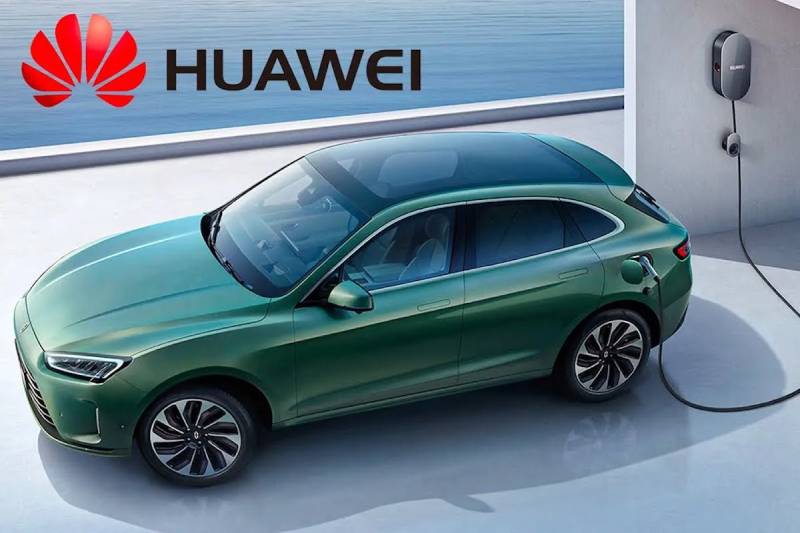
Huawei Debuts in the EV Market with New Vehicles and Automaker Collaborations
Giant Chinese smartphone and telecommunications company Huawei is increasing its efforts to sell its technology in the cutthroat electric vehicle market.
The business has made it clear that it does not produce automobiles. Rather, it partners with automakers to develop new EV brands or sells tech components like its Harmony OS operating system and driver-assist product.
Following announcements over the weekend about a joint venture for car technology with Changan Automobile, Huawei confirmed on Tuesday that it is developing new car brands in China in collaboration with at least four traditional automakers.
Changan and Huawei are already partners on the 2018-founded Avatr electric vehicle brand, which was powered by the massive Amperex Technology electric car battery. The SUV and sedan models from Avatr are priced just over $42,000 apiece.
Additionally, Huawei and Chery are collaborating on the Luxeed electric vehicle brand, which on Tuesday unveiled the S7 sedan.
At a Luxeed launch event on Tuesday, Richard Yu, the head of Huawei’s automotive and consumer business, revealed that similar collaborations with BAIC Motor and JAC Motor are in the works.
A request for comment from JAC and BAIC, whose Arcfox electric brand already makes use of Huawei technology, was not immediately answered.
According to Tu Le, founder of Beijing-based advisory firm Sino Auto Insights, Chinese automakers whose products “lacking in the tech necessary to compete seem more than happy to use Huawei’s [tech] to fill the voids.”
“It’s still too early to know how [Huawei’s] solution measures up to its competitors but they, like many other tech companies, see the opportunity and are going all-in on it,” he said.
Tencent, the company behind WeChat, the popular social media app in China, has stated that it provides autotech to BMW and a few other automakers.
In the first half of next year, the Chinese manufacturer of smartphones and household appliances, Xiaomi, intends to release a car. The business unveiled HyperOS, a new operating system, towards the end of October.
Due to restrictions on purchasing from American suppliers, Huawei’s revenue from its consumer business has decreased by half since the United States placed the company on a blacklist. This covers access to the most recent iterations of Google’s Android operating system through licensing.
Harmony OS, Huawei’s proprietary system, has been made available instead.
Huawei’s revenue from consumers in the first half of the year was 103.5 billion yuan ($14.27 billion), while the company’s revenue from intelligent automotive solutions, which includes technology for new energy vehicles, was 1 billion yuan. Other business segments also include revenue related to cars.
In three ways, according to Huawei’s Yu, the company collaborates with automakers:
Late in 2021, Huawei unveiled the Seres-made Aito brand of automobiles. The popularity of the cars has increased as a result of their frequent displays at Huawei’s numerous smartphone stores throughout China. More than 120,000 M5 models, according to the company, have already been delivered.
According to Yu’s statement on Tuesday, Aito plans to ship between 16,000 and 18,000 M7 cars in November and over 20,000 the following month.
Businesses ranging from BYD to Li Auto, a startup, have seized a substantial portion of the expansion in China’s new energy vehicle market, which encompasses hybrid and battery-powered automobiles. Older foreign automakers, like Toyota and Volkswagen, have taken longer to adjust.
According to the China Passenger Car Association, the percentage of new energy vehicles sold in China this year has increased to well over one-third.
Google's NotebookLM app now offers Audio Overviews, an AI tool that transforms your research into… Read More
Google Wallet is adding a new method to verify your age while protecting your identity,… Read More
PayPal has expanded its advertising capabilities beyond its own platform with the launch of Offsite… Read More
Google recently revealed that it will host a separate event to discuss upcoming Android improvements… Read More
In today’s competitive work environment, mentorship has become more than a professional courtesy—it’s a strategic… Read More
Choosing the right programming language is a foundational step in shaping a developer's career and… Read More